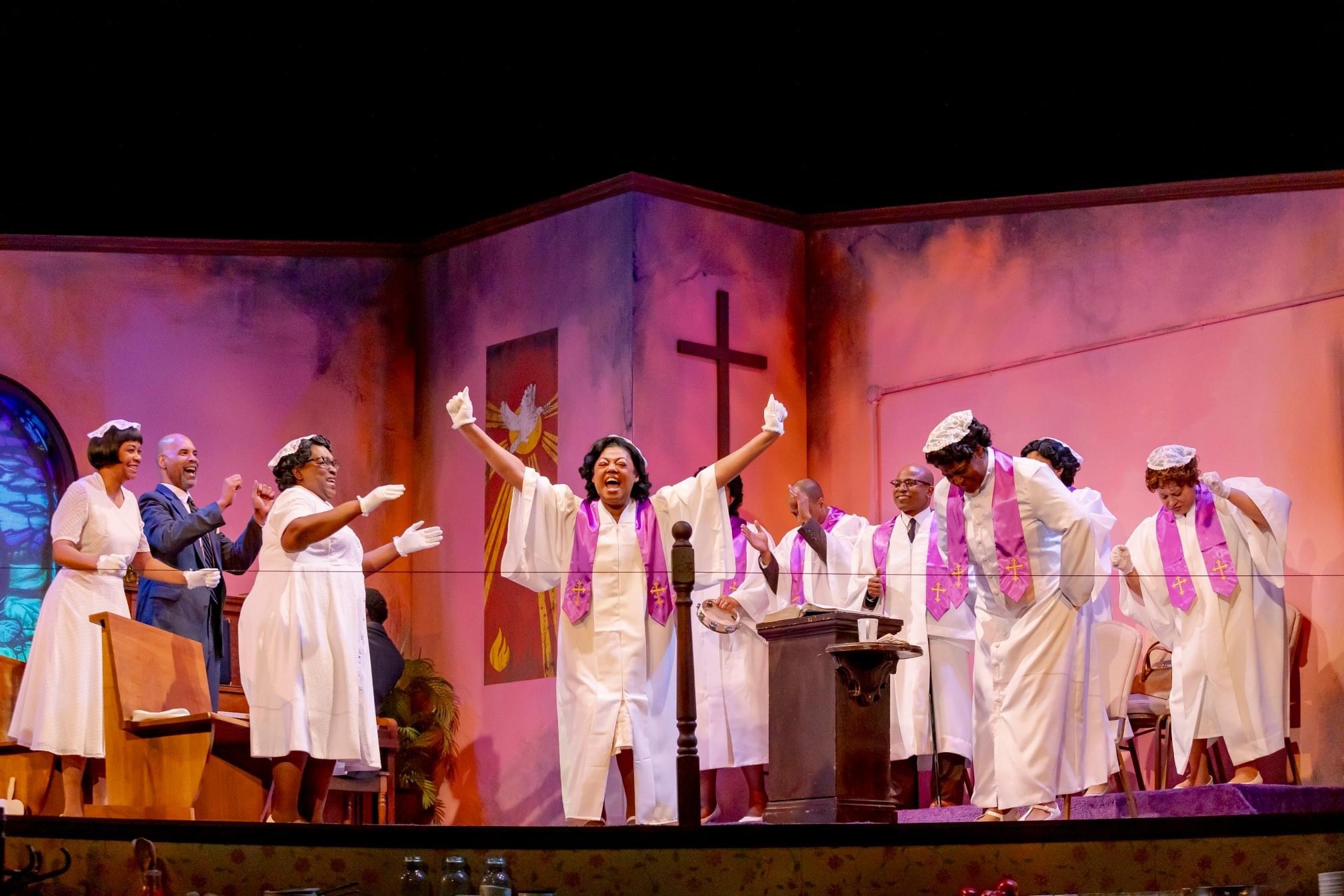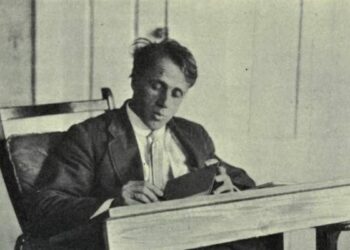Table of Contents
ToggleIntroduction
The Amen Corner Summary And Themes By James Baldwin James Baldwin’s The Amen Corner, first performed in 1954, is a powerful and poignant play that delves into the complexities of faith, family, and identity in a Black church community in Harlem, New York. The play explores the struggles of its central character, Sister Margaret Alexander, a dynamic and passionate preacher, as she grapples with personal, familial, and spiritual conflicts. Set within the intimate and sometimes volatile environment of the church, The Amen Corner is both a critique of religious dogma and a meditation on the role of the church in the lives of African Americans.
Baldwin’s exploration of the themes of religion, gender, power, and the tension between the personal and public lives of his characters makes The Amen Corner a compelling social commentary on the intersection of race and religion in mid-20th-century America. Through the lens of Sister Margaret, Baldwin presents a nuanced critique of religious authority, particularly the ways in which power dynamics within the church intersect with the lives of its congregation. At its core, the play addresses the complexity of human relationships, the nature of salvation, and the cost of personal sacrifice.
Summary of The Amen Corner by James Baldwin
The play takes place in Harlem, primarily within the confines of the church where Sister Margaret Alexander preaches. Baldwin introduces the audience to a world of emotional and spiritual turbulence as the church members, who look to Margaret for guidance, are caught in a whirlwind of personal crises and conflicts.
Act 1
The play begins in the church with Sister Margaret leading a Sunday service. Her fervent and forceful preaching resonates with the congregation, but beneath the surface of her charismatic leadership, there is tension. Margaret’s authoritarian and uncompromising approach to the church’s teachings creates an atmosphere of emotional intensity and strict control. She views the church as a source of salvation and is unwavering in her belief that it is the only path to righteousness.
Margaret’s personal life, however, is complicated. Her estranged husband, Luke, a jazz musician who has struggled with alcoholism and a tumultuous lifestyle, reappears in Harlem after a long absence. His return challenges Margaret’s tightly controlled world. Luke’s presence forces Margaret to confront unresolved issues from her past, particularly her relationship with him and their son, David. Margaret had once chosen the church over her husband and family, a decision that has had lasting consequences.
At the same time, Margaret’s son, David, is growing up and becoming more aware of the complexities of the world around him. David is caught between his mother’s rigid religious expectations and the temptations of the outside world, represented by Luke’s return. The clash between Margaret’s faith-driven world and Luke’s secular lifestyle forms the core conflict of the play.
Read more
Act 2
In Act 2, the tension between Margaret and Luke deepens as Luke confronts his wife about her strictness and hypocrisy. Luke’s criticisms force Margaret to reflect on her role as a mother, a wife, and a leader in the church. He accuses her of prioritizing the church over her family, and this criticism challenges Margaret’s deeply held beliefs about the sanctity of her work. Luke also brings up Margaret’s past mistakes, including her abandonment of him and their son, and he tries to win back David’s affection by offering him a different view of life that does not rely solely on the church’s doctrine.
David becomes torn between his loyalty to his mother and his curiosity about the world outside the church. As Margaret’s authority falters, the congregation begins to question her leadership. Some members, like Sister Moore, a fellow preacher in the church, begin to challenge Margaret’s authority, arguing that she has become too controlling and self-righteous. The division within the church mirrors the fracture in Margaret’s family life. As the play unfolds, Margaret’s struggle to maintain control over her life, her son, and her church becomes more intense.
Act 3
The final act of the play brings everything to a head. Margaret’s authority in the church is called into question, and the personal conflicts between her and Luke reach their climax. The church is divided, with some members supporting Margaret and others rejecting her leadership. Meanwhile, David makes a choice that signifies his transition from childhood to adulthood. He decides to leave his mother’s home and, symbolically, the world of the church, seeking a new path for himself.
Margaret, facing the collapse of her family and her church, is forced to confront the consequences of her decisions. Her journey is one of self-discovery, as she is finally able to accept her flaws and confront the compromises she has made in her pursuit of spiritual and personal fulfillment. The play ends on a note of ambivalence, as Baldwin suggests that salvation is not a straightforward path and that the personal sacrifices individuals make in pursuit of faith can come at great emotional and psychological cost.

Themes of The Amen Corner by James Baldwin
Baldwin’s The Amen Corner addresses a wide array of themes, many of which are central to his broader body of work. Through the play’s exploration of the lives of its characters, Baldwin tackles issues of faith, family, gender, race, and the societal pressures faced by African Americans in mid-20th-century America.
1. Religion and the Church
The Amen Corner Summary And Themes By James Baldwin One of the most significant themes in The Amen Corner is the role of religion and the church in shaping the lives of its members. For Margaret, the church is both a place of salvation and a means of control. She is a fervent believer in the power of religion to transform lives, but she is also deeply conflicted about the toll it takes on her personal relationships. Baldwin critiques the ways in which the church, while offering spiritual solace, can also serve as an oppressive force, particularly for women who are expected to embody its values without question.
Throughout the play, Baldwin uses Margaret’s struggle with the church’s demands to explore the tension between religious faith and personal identity. Margaret’s inability to reconcile her roles as a mother, a wife, and a preacher reveals the emotional and spiritual cost of strict religious devotion. The church’s influence is depicted as both a source of strength and a source of limitation, depending on the individual’s relationship with it.The Amen Corner Summary And Themes By James Baldwin
Read more
2. Family and Motherhood
The Amen Corner Summary And Themes By James Baldwin Another central theme in the play is the relationship between mothers and their children. Margaret’s relationship with her son, David, is a focal point of the play, as her strict religious beliefs and her devotion to the church put a strain on their bond. Margaret’s sense of duty to God and her congregation leads her to neglect her family, and she is unable to fully fulfill her role as a mother. This theme of familial responsibility and sacrifice is further complicated by the return of Luke, Margaret’s estranged husband, who challenges her decisions and the choices she has made regarding her family.
David’s decision to leave his mother’s home at the end of the play marks his coming-of-age and represents his attempt to break free from the controlling environment of the church. This act signifies his desire for autonomy and his rejection of his mother’s rigid world. The tension between Margaret’s maternal love and her commitment to the church suggests that true motherhood requires more than just adherence to religious duty.The Amen Corner Summary And Themes By James Baldwin
3. Gender and Power
The theme of gender and power is also crucial to understanding the dynamics of The Amen Corner. Margaret, as a female preacher, occupies a position of power within the church. However, her authority is constantly challenged by the men around her, particularly by her husband Luke. Luke represents a more secular and masculine worldview, while Margaret’s spiritual power is tied to her religious conviction. Her struggle to maintain her authority as both a mother and a preacher reflects the gender dynamics of the time, where women were expected to fulfill both domestic and spiritual roles without question.
Margaret’s refusal to allow men to dominate her church, however, also represents a form of resistance to the patriarchal structures that attempt to limit women’s roles in both the family and the church. This tension between Margaret’s public and private selves raises important questions about the place of women in religious and societal institutions.The Amen Corner Summary And Themes By James Baldwin
4. Identity and Self-Realization
Identity and self-realization are central to Baldwin’s work, and The Amen Corner is no exception. Margaret’s journey throughout the play is one of self-discovery and reconciliation. She must come to terms with her past mistakes, her current struggles, and the emotional toll that her commitment to the church has taken on her family. Ultimately, Margaret’s story is one of personal sacrifice and the search for redemption, not just in the eyes of God but also within her own heart.
David’s decision to leave his mother and the church signifies his quest for his own identity. His rejection of the religious world he has grown up in represents his desire to forge his own path and make his own choices. Baldwin’s exploration of identity in The Amen Corner highlights the complexity of self-realization and the challenges that come with understanding one’s place in the world, especially when religion and family expectations collide.
5. The Complexity of Human Relationships
At its core, The Amen Corner is about the complexity of human relationships. Baldwin uses the characters’ interactions to explore the fragility of human connections and the ways in which personal desires and societal pressures shape those relationships. Margaret’s relationship with Luke, David, and her congregation reflects the broader tensions that exist within the African American community in a time of racial and social upheaval.The Amen Corner Summary And Themes By James Baldwin
The play explores how people struggle to find meaning and purpose in their lives and how relationships can either uplift or destroy them. Baldwin’s nuanced portrayal of these relationships emphasizes the importance of self-awareness, communication, and reconciliation in overcoming the emotional barriers that divide people.The Amen Corner Summary And Themes By James Baldwin

Conclusion
The Amen Corner Summary And Themes By James Baldwin James Baldwin’s The Amen Corner is a deeply moving and thought-provoking play that examines the intersection of faith, family, identity, and gender. Through the story of Margaret Alexander and her struggles with her church, her family, and her own sense of self, Baldwin offers a critique of religious dogma while also celebrating the resilience of the human spirit.
The play’s themes of sacrifice, personal growth, and the complexities of human relationships make it a powerful exploration of the emotional and spiritual costs of living in a divided world. Through its rich character development and sharp social commentary, The Amen Corner remains a seminal work in American theatre.The Amen Corner Summary And Themes By James Baldwin
Read more
FAQs
1 What is The Amen Corner about?
The Amen Corner is about Sister Margaret Alexander, a powerful preacher in Harlem, and the struggles she faces in balancing her religious duties with her responsibilities as a mother and wife. The play explores themes of faith, family, identity, and the tension between personal desires and religious devotion.
2 What are the main themes of The Amen Corner?
The main themes of The Amen Corner include religion and the church, family and motherhood, gender and power, identity and self-realization, and the complexity of human relationships.
3 What is the significance of the church in the play?
The church represents both a source of spiritual strength and an oppressive force. The play critiques the ways in which religion can be both empowering and limiting, especially for women like Margaret, who must navigate the tensions between her religious duties and her personal life.
4 How does Margaret’s relationship with her son, David, evolve in the play?
Margaret’s relationship with David is central to the plot. David becomes torn between his loyalty to his mother and his desire to explore the world outside the church. Ultimately, David chooses to leave, symbolizing his coming-of-age and his rejection of his mother’s rigid religious world.
5 What does The Amen Corner say about gender roles?
The play explores the challenges faced by women in positions of power, particularly in religious institutions. Margaret, as a female preacher, faces constant challenges to her authority from men like her husband, Luke, who represent a secular, patriarchal worldview.
6 How does Baldwin address the theme of self-realization in the play?
Baldwin uses Margaret’s personal journey to explore the complexities of self-realization. Margaret must confront her past mistakes, her relationship with her family, and the emotional cost of her religious devotion. David’s decision to leave his mother represents his own search for self-identity.

















